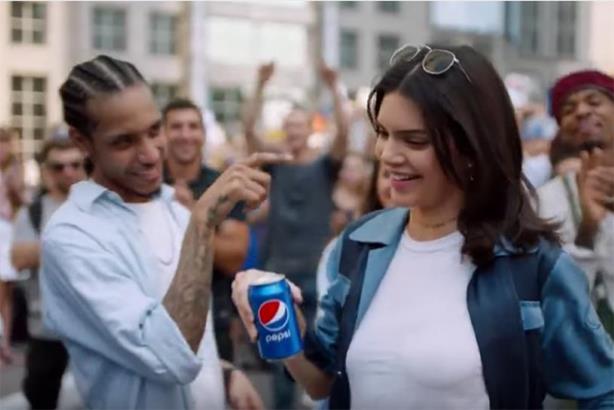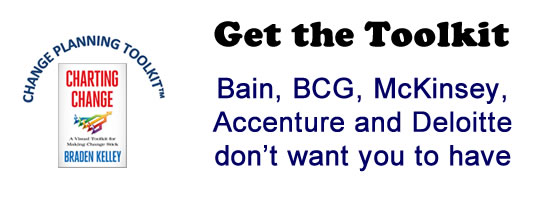Watch Heineken School Pepsi on How To Advertise to Gen Z

It’s a lesson for every brand…
Winning over hearts and minds of Gen Z is risky business, but done well it wins them (and the rest of us) like nothing else can.
Watching the nightmare that unfolded in the wake of Pepsi’s recent ad featuring Kendall Jenner was like watching a train wreck in slow motion. You have to wonder how Pepsi got it so wrong when it’s so easy to gauge sentiment in today’s marketplace before unleashing your mass marketing heavy artillery.
The problem was that for all of its social media presence Pepsi, like so many large brands, is still living in the Pepsi Generation era of paid media rather than Gen Z mind set of earned media. That shift from paid to earned is one of the most fundamental innovations in marketing.
Had Pepsi tested and distributed the Ad through limited social media campaigns they would easily have seen the reaction it was likely to get and modified it or pulled it accordingly. They didn’t because they are still very stuck in an old and outdated model of paid media. Gen Z sees that old model not just as ineffective, but also insulting. Heineken, on the other hand, showed respect that earned respect from the market with it’s latest ad.
When you earn media you put the message front and center, not the product. And that is the fundamental difference between Pepsi’s paid ad, and Heineken’s earned ad. (See the Heineken ad later in this column)
Paid Media
Companies such as Coke, Nike, Pepsi, IBM, Anheuser-Busch, Procter & Gamble, and myriad other brands, have had a tremendous advantage in the market because they have been long-term players with enormous advertising budgets. In fact, P&G.’v. U.S. ad budget of $3 billion is greater than the GDP of twenty-nine countries, and its global budget of $9 billion tops the GDP of fifty countries. Pepsi by comparison spend $2.4 billion.
You would think that, after decades of being imprinted on our collective psyche, a brand such as Pepsi could sustain itself without the need for paid advertising. Does the money really need to be spent? Any advertising executive worth her Madison Avenue address would say, “Of course! Otherwise, your competitors will step in and quickly eclipse your brand.”
Not true.
Earned Media
On of the best examples of influencing the market without a massive ad campaign budget is Dove’s Campaign for Beauty. Rolled out in 2004, the campaign started what has become a beauty and fashion revolution by making the point that media manipulates us (especially women) to aspire to images of beauty that are unattainable and unhealthy.
Now, let’s be clear, the campaign was spearheaded by Ogilvy & Mather’s very expensive creative team, so this was paid media. However, some of its most successful ads were distributed only through social media and were done on a budget small enough to be a rounding error in the mega brand ad industry.
“That’s the essence of earned media–gain respect and gain influence. Don’t patronize Gen Z. As Pepsi learned, they get really pissed-off when you do!”
One of the most powerful pieces of the campaign was a YouTube video called “Evolution of Beauty,” which showed a young woman transformed through layers of makeup, lighting, and Photoshop into a billboard model. The YouTube video fades to the end with the simple white on black text, “No wonder our perception of beauty is distorted.” The video created a firestorm of attention on YouTube and in all forms of broadcast and print media, with well over three hundred million views across all channels. Yet the entire budget for the video was $135,000 dollars. Just to put that into perspective, $135,000 wouldn’t buy you four seconds of a Super Bowl ad, and that’s not taking in account production costs. By its own estimates, Unilever, which owns the Dove brand, generated the equivalent of $150 million dollars of paid advertising. But what it did most effectively was connect with an audience by showing that the company cared about its customers’ values and challenges.
You know you have “street cred” when you are no longer forced to buy attention. This sort of respect from the marketplace creates a demand that brings you more influence through which you can grow and expand, based on the trust you have earned with your customers and fans.
Stephanie Fischer, president and CEO of the Global Retail Marketing Association, put it well when she told me, “Meaning is the new money. These kids [millennials and Gen Z] care about the DNA of your organization, you really have to be able to do things that are meaningful to them. They influence each other more than any generation out there because they’re always connected. If you’re a businessperson and you’re having a very meaningful relationship with this generation, they’re going to be your best brand advocate. They’ll be your best marketers.”
That’s exactly what Heineken’s ad did. Their latest viral YouTube ad is school for how to create the sort of meaning that Gen Z thrives on. It goes beyond “feel good” to actually illustrate the power of social media in connecting people across demographics and categories. But it does it in a way that is respectful to the viewer. That’s the essence of earned media–gain respect and gain influence. Don’t patronize Gen Z. As Pepsi learned, they get really pissed-off when you do!
Watch the YouTube video below and notice how Heineken and the product are pretty much invisible? The ad is about the message and it’s meaning. The product is almost an after thought.
The Power Of Influence
Previous generations had the option to demonstrate against or to boycott a product or company–even a government–but only if they could effectively enlist the media in their cause. Gen Z doesn’t need to win over the media gatekeepers; they have the ability to wreak havoc on companies and even governments through the influence they wield as a hyperconnected community.
Understanding that is the key for brands that want to connect with the influencers who will ultimately become their greatest champions. Earned media is the ultimate collaboration between the a brand and the marketplace; it is the co-creation of value and meaning. No focus groups, no guessing what the market wants or how it will respond; in their place is a synchronized evolution of the brand and the product. What many brand’s are just starting to realize is that millennials and Gen Z are the sorts of customers they have been dreaming about–open, transparent, available, and desperately seeking meaningful connections which they can attach themselves to!
Or, as Pepsi found out the hard way, if you don’t do well by Gen Z, they can also be your worst nightmare.
This article was originally published on Inc.
Wait! Before you go…
Choose how you want the latest innovation content delivered to you:
- Daily — RSS Feed — Email — Twitter — Facebook — Linkedin Today
- Weekly — Email Newsletter — Free Magazine — Linkedin Group
 Tom Koulopoulos is the author of 10 books and founder of the Delphi Group, a 25-year-old Boston-based think tank and a past Inc. 500 company that focuses on innovation and the future of business. He tweets from @tkspeaks.tomtom
Tom Koulopoulos is the author of 10 books and founder of the Delphi Group, a 25-year-old Boston-based think tank and a past Inc. 500 company that focuses on innovation and the future of business. He tweets from @tkspeaks.tomtom
NEVER MISS ANOTHER NEWSLETTER!
LATEST BLOGS
Three things you didn’t know about credit cards
Photo by Ales Nesetril on Unsplash Many of us use credit cards regularly. From using them for everyday purchases to…
Read MoreFive CV skills of a business-minded individual
Photo by Scott Graham on Unsplash The skills listed on a CV help employers quickly understand your suitability for a…
Read More


